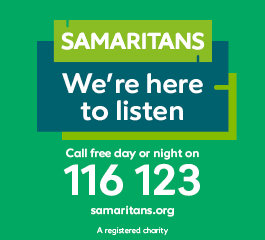What worked for me: Dialectical Behavioural Therapy (DBT)
22 January 2020
Maddi Crease describes DBT and explains how it has helped her more than other therapies.
As a young woman who’s been in the mental health system for over six years, including inpatient admissions, I’ve had my fair share of therapy. From talking about the past and present, to Cognitive Behavioural Therapy, to the therapy that has probably contributed the most to my personal journey: Dialectical Behavioural Therapy.
"I know that I find comfort in my destructive symptoms simply because I know them, they're familiar. New things are hard to trust, of course they are."
What is Dialectical Behavioural Therapy?
Dialectical Behavioural Therapy (DBT) is a skills-based therapy - this means that it’s less about discussing deep-rooted troubles from the past and more about finding practical solutions to the difficulties that arise in the present.
This type of therapy is divided into four categories: mindfulness, interpersonal effectiveness, emotional regulation, and distress tolerance.
Mindfulness
Mindfulness is about living in the present moment often through short, focused activities like concentrating on your breathing. The key points here are that you do this via observing how you feel and being able to describe it without judging yourself. If you do find yourself engaging in self-judgement you are taught not to argue with yourself: "don’t judge your judging".
Interpersonal effectiveness
Then comes interpersonal effectiveness, which in simpler terms could be called people skills. This one is about finding your goals in interaction with others, staying mindful, and focusing on specific skills depending on what you want or need and how important that is to you. In my therapy these are put into action through the use of acronyms.
Emotional regulation
Next is emotional regulation, the part of DBT I have just completed. The emotional regulation module is all about helping yourself to keep your emotions at manageable levels that match the facts of the situation. Here, you use a lot of ‘wise mind’ skills. This phrase is about balancing your emotions with the provable facts.
Distress tolerance
The last part is distress tolerance. I have yet to start the distress tolerance phase but I have done a bit of it in different therapeutic approaches. From what I know, the goal is to manage very strong, intense feelings. Living with a diagnosis of Borderline Personality Disorder, this aspect of DBT is extremely relevant to my difficulties. You might try physical techniques or something called radical acceptance. Radical acceptance is accepting what you can’t control, something which sounds difficult to me.
So, that’s a brief introduction to what DBT actually is. But how does it feel to go through it?
Experience of DBT
Well, my current course is in a group setting. Though intimidating at first, it’s nice to have people to work through it with as everyone has a different way of seeing things. Sometimes, it’s not the therapists who say the mind-blowing things.
In a word, I have found DBT to be challenging. From myth busting to putting skills into practice, it's not an easy process and I find myself feeling frustrated at times. I remember scribbling all over a worksheet before tearing it up.
But this isn’t because it’s impossible. It’s because change is hard.
I know that I find comfort in my destructive symptoms simply because I know them, they're familiar. New things are hard to trust, of course they are. The key thing I tell myself is to ‘feel the fear and do it anyway'.
- See more: What worked for me - Cognitive Analytical Therapy
- See more: How long should I expect to be in therapy for?
As mentioned, this is a skills-based therapy but that doesn’t mean that there is no space to talk about how you feel. In my group we often discuss things like how mindfulness or a particular worksheet has impacted us. Be it positive feedback or frustrated criticism, all comments are welcome.
DBT does not "cure" trauma but it can help you make the present more manageable. This, in turn, can help the future seem more hopeful.


Comments
Write a Comment
Comment Submitted